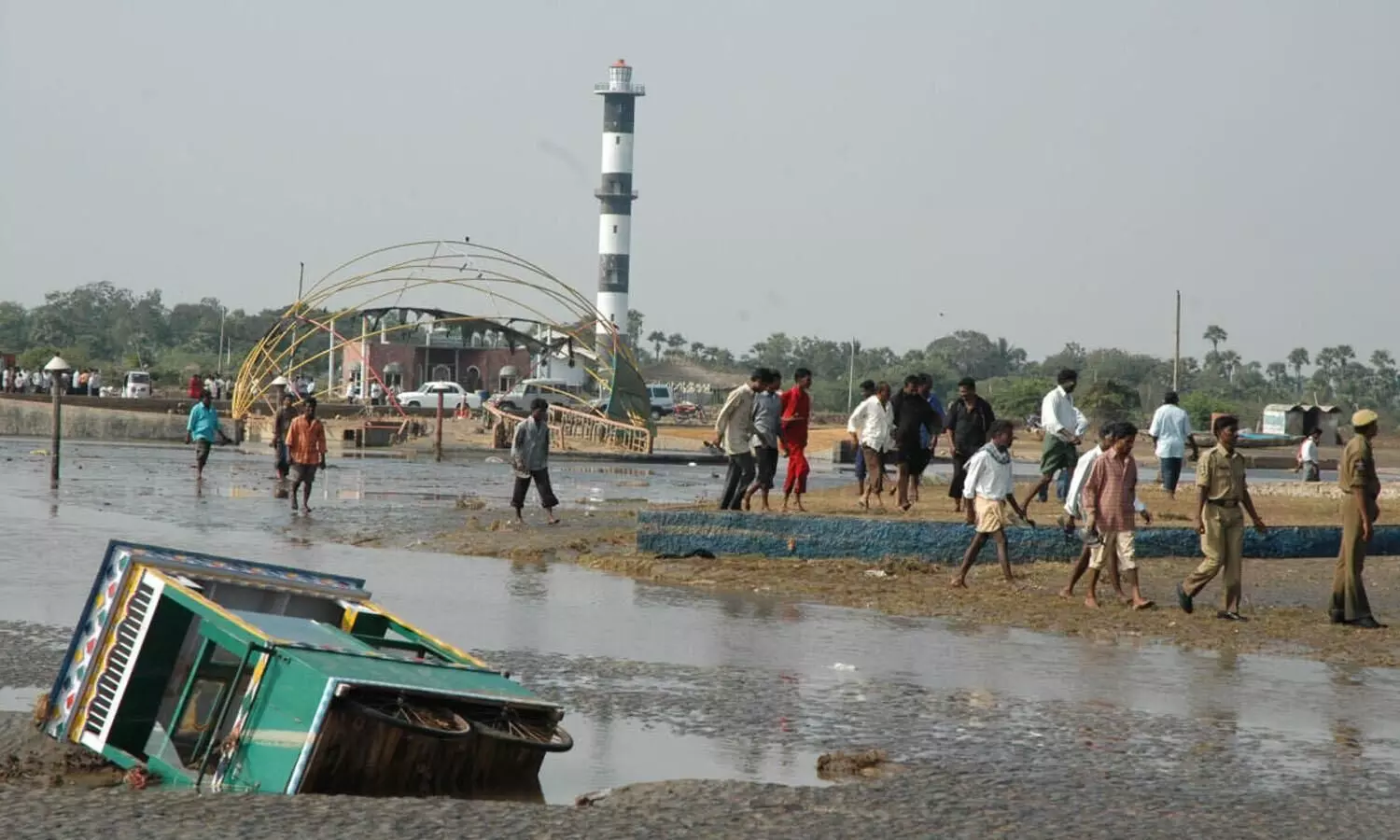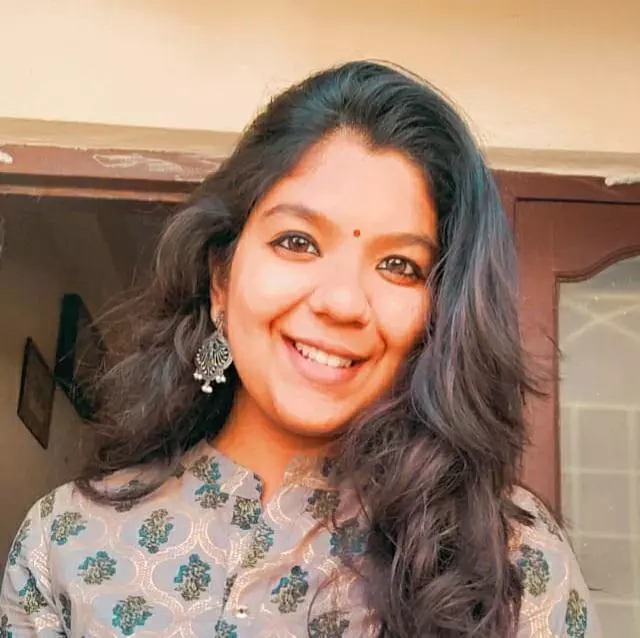Boxing day tsunami, killed 38 in Krishna dt, was unknown, unseen: then Collector K Prabhakar Reddy
The dawn of December 26, 2004, was a nightmare that shook the lives of millions across the globe, quite literally

HYDERABAD: The dawn of December 26, 2004, was a nightmare that shook the lives of millions across the globe, quite literally. After an earthquake hit the tectonic plates under an Indonesian island Sumatra at 6:28 am, the Indian Ocean was pushed to enter the landmass and take back with it lives of lakhs of people.
The Boxing Day tsunami, that hit 14 countries on the Indian Ocean's coast, took away the lives of over 2 lakh people and recorded crores of rupees of property damage. In Andhra Pradesh, it hit the Manginapudi beach of Machilipatnam coast and then Krishna District Collector K Prabhakar Reddy, 18 years after the incident, recalls the horrendous natural disaster. He told NewsTAP that the tsunami was an unknown and unseen and unforeseen phenomenon.
As an administrator, when you did you get the alert about the tsunami; what was the thought process then, as this was something that wasn't faced before ?
As this was something that we never faced before, no one saw it coming! I was in Vijayawada and maybe because I was walking, I did not feel the tremors at all. A few minutes later, I get calls saying that this huge earthquake hit an island in Indonesia. Since it was 2,500 km away from India, none of us panicked. I immediately went to the seismograph station where they said that the earthquake was not likely to hit us. So we told the media that it wasn't as alarming.
At 9:30 am, two hours after the earthquake, I got a call from the police posted at the Machilipatnam beach that there was an unusual rise in the water level and it was time to panic. All district collectors along the long coastline of Andhra Pradesh were alarmed as we did not know what was happening. It happened within minutes and we did not know what to do.
How many people died and what was the property damage recorded?
There were around 50-60 people who were at the beach that morning as it was an auspicious day and they were to take bath in the ocean. When the water levels started to rise, people panicked and started running away from the coast. When the water receded, the number of people who ran away was noticeably less. So the police outpost and the people who survived, who were present there, noted that those people died.
A total of 38 people died. Mostly women and children as they were not able to run fast enough. Men, wearing just shorts or pants, managed to escape. The people who died were family members of the survivors.
There was no major property damage recorded, to our surprise. Only some structures on the beach and a few shacks were destroyed but nothing else. A few four-wheelers were found afloat on the ferocious waters.
How were the police mobilised ? How and when were the bodies recovered ?
Around 12 noon was when I reached Machilipatnam from Vijayawada. By the time I went there, the waves started receding. It was just a massive first wave that killed all those people. Gradually, the intensity of the waves reduced. As the water was going back to normal level, the bodies were found lying on the beach. Nobody had to go inside the sea to recover them. The police and other locals brought those bodies back.
When we saw the bodies, we saw that they were not injured or bruised. It was just the force of the waves that killed them. We also noted that all those who died were people who came for the 'samudra snanam'. Fishermen, far in the sea, came out alive and unhurt. They also said that they didn't even feel the tsunami.
What was the reaction of family members who survived and how were they handled ?
The family members were shaken. The survivors were mostly men, who were able to run away, and the ones who died were either their sisters or wives or children. The men told us, "Sir, we were able to run as we are men. Our wives, who were wearing sarees, and our children could not run."
The then Prime Minister Dr Manmohan Singh, then Chief Minister YS Rajasekhar Reddy flew down and consoled the family members.
It was an unexpected, horrific natural calamity. Something that was not handled by anyone in India before. Everyone felt helpless and disappointed for the people who died.
What was the aftermath of the tsunami?
By 4 pm that day, the bodies were sent to a government hospital for documentation and were handed over to families. Since all of them who died were there for the ritual, it was very easy to identify the deceased and their family members. By the same evening, the entire place was cleared off. It did not take long to restore the beach as well.
The tsunami, however, left behind a fear that such natural calamities do not announce their arrival.
Chief Minister YS Rajasekhar Reddy and the then Union Minister for Science, Technology and Earth Sciences Kapil Sibal, together opened the first tsunami detecting centre (INCOIS) in Hyderabad which is operational till date.
Usually, we are fully prepared for cyclones as it is a recurring phenomenon. The tsunami was unseen and left a huge trauma on everyone.
When you learnt that this tsunami killed over 2 lakh people in various countries, did the '38' number feel small?
Even a single life lost is a tragedy. It is absolutely unfortunate that such a phenomenon occurred and people had to lose their loved ones. However, if not for the 'samudra snanam', there wouldn't have been any loss of life in Machilipatnam.
The tsunami was more intense down south, in Chennai and Andaman and Nicobar islands. Here, it wasn't as much, but it was still frightening, and to this day, a nightmare recorded in the lives of many.



